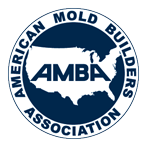By: Patrick Collins
July 17, 2009
We recently had been asked by a potential customer why a polycarbonate would crack post-molding. They had been having this issue on a specific part from one of their current suppliers.
Our first step was to ask if we could get a sample of the part and the process sheet. After looking at the part and reviewing the process sheets we noticed the following: First, key set points like the dryer settings were not included in the process sheets. We saw this as a potential red flag. With polycarbonate it is very important that the material be dried correctly with the proper equipment. Polycarbonate requires a dryer setting around 240 degrees for four hours (following the material recommendations of course, some may vary around 250 degrees for four hours) but doing this requires a high-heat dryer. It is always good to verify that the moisture is 0.020% or less prior to molding.
Further looking into the setup sheets we noticed that the injection pressures were all on the high side of the recommended range. This can be a sign that the gate size or nozzle orifice may be a potential suspect. Running the incorrect gate size or nozzle size can induce molded-in stress.
We also noticed a lack of process monitoring; the set limits would allow the press to continue to run outside the manufacturer’s recommendations. If uncontrolled, incorrect barrel temps, pressures or screw cushion can all be reasons for in-molded stress.
In looking at the part, the molded stresses were obvious, particularly when looking through a polarized lens under strong lighting. The stresses create a rainbow effect in the translucent material. Our next step was to measure the gate size and we found it to be much smaller than what we would recommend for PC.
So we had plenty to consider from the start, and these are just a few possible reasons for PC cracking. We’ve also been told by the material manufacturer that some mold release sprays can attack polycarbonate. They even had a story about an operator whose hand lotion was found to be the culprit for cracking parts. This is one reason we do not allow silicone mold release in the plant and insure our operators use gloves on polycarbonate jobs.
After ruling out all of the above possibilities, it’s possible that some part designs may require annealing for stress relief. Annealing of the plastic part is the process of heating the post molded part to just below its softening point, then keeping it at the high temperature for a period of time before cooling it slowly back to room temperature. This can relieve some molded-in stresses but isn’t a desirable solution in most cases.
Processing polycarbonate at the manufacturer’s recommendations is the key to stress-free and crack-resistant parts. If, for any reason, you are unable to follow the recommendations you should ask yourself why and correct the problem at its roots.
_horizontal_white_536x129.png)

